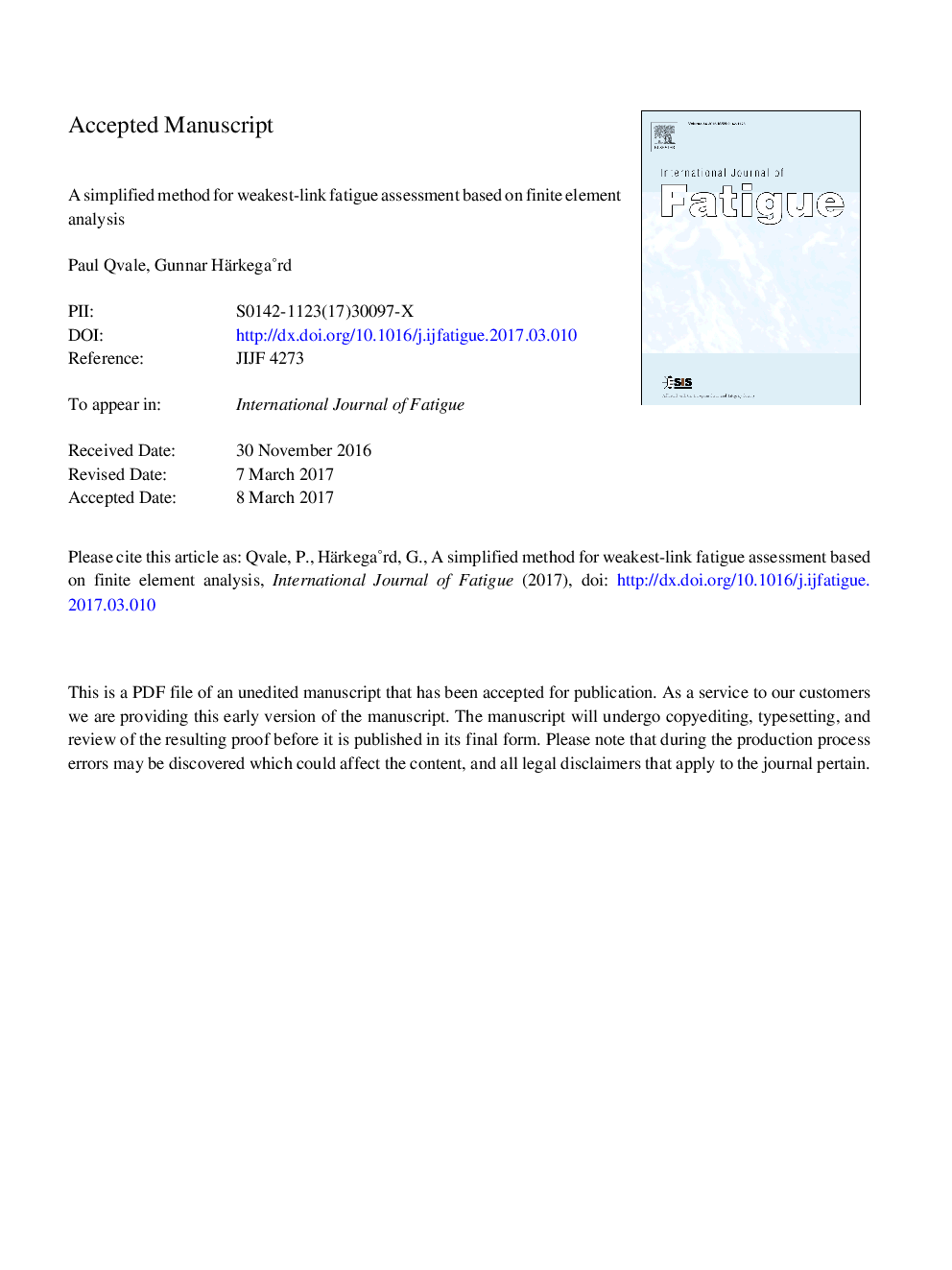| Article ID | Journal | Published Year | Pages | File Type |
|---|---|---|---|---|
| 5015119 | International Journal of Fatigue | 2017 | 21 Pages |
Abstract
Widespread use of weakest-link theory for high-cycle fatigue assessment based on finite-element (FE) results is limited by the lack of suitable post-processors. By assuming the stress within each element to be a linear function of the volume, weakest-link calculations can be performed by simple operation on typical FE output. This simplified method was evaluated on FE results from five elementary components with brick element meshes of different resolution. Deviations in effective stress amplitudes were <2.5% compared with analytical solutions. In cases where analytical solutions were unavailable, solutions were compared with those of the in-house post-processor P-FAT. Deviations were around 5% for 'fine' meshes and increased with decreasing mesh resolutions. Deviations were always conservative and largest for materials with high fatigue strength scatter.
Related Topics
Physical Sciences and Engineering
Engineering
Mechanical Engineering
Authors
Paul Qvale, Gunnar HärkegÃ¥rd,
